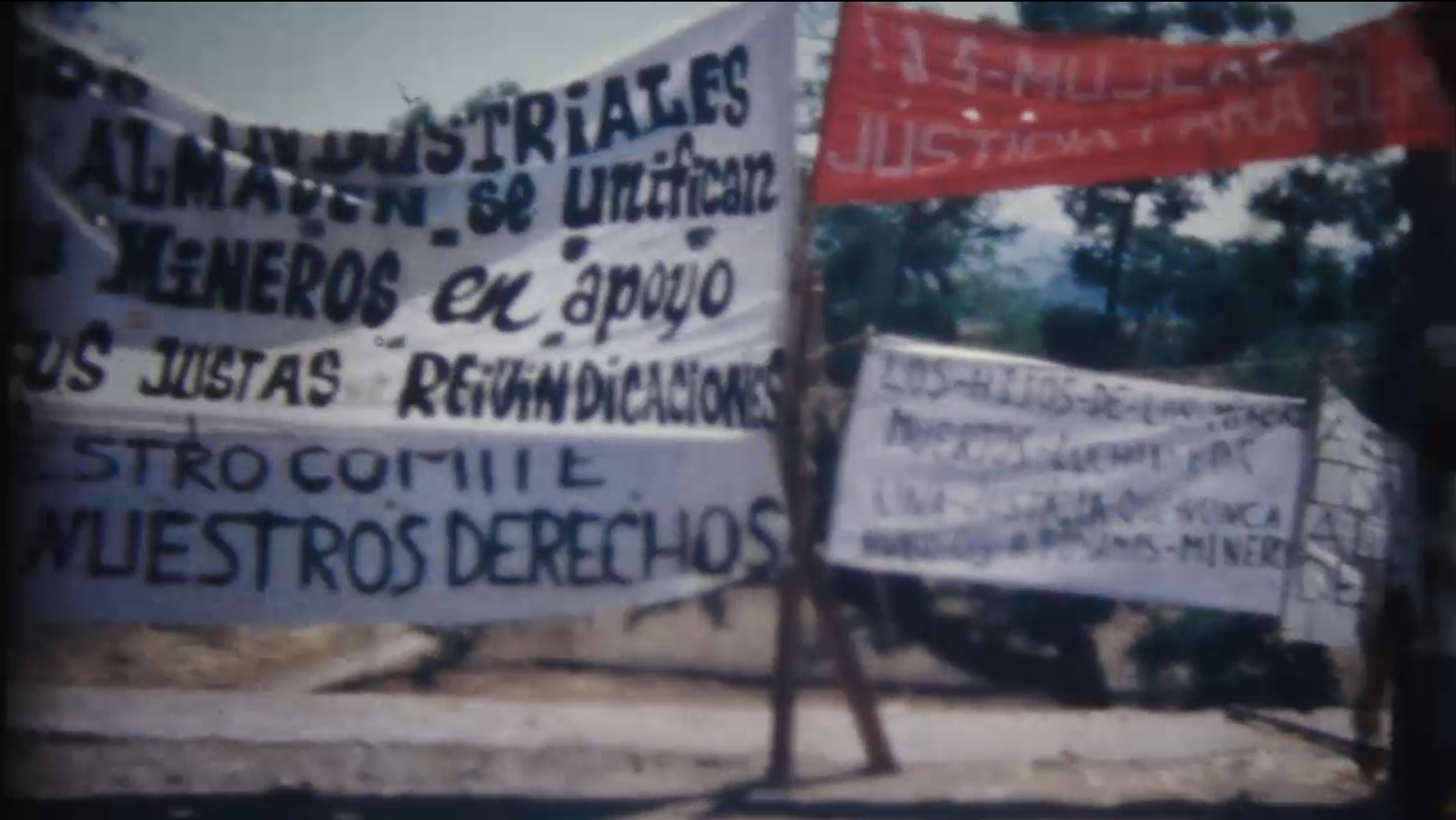At its base, Encierro can be considered a ritual of discontent and dissensus, but also of community, collective memory and desire for change.[33] Primarily, Encierro aims to temporarily transform the heritage mine gallery back into a political space, as it has always been, and especially during workers’ protests such as the 1984 mining strike. The strike of 1984 was a time of intense meetings between workers, workers’ representatives, Almadén Mining Company (MAYASA) and the State, owners of the mine.[34] My idea was not to reenact these meetings as if we were in 1984, but to have political meetings and debates anchored in the present and about the situation in 2019. The possibility of bringing together members of the community, politicians, representatives of the educational and health system, etc., is difficult to achieve in the everyday life of this area. Through this artistic proposition I have the opportunity to devise a time and a space for conversation and reflection (the 11 days in the mine), and to carry out those encounters.
The concept of the strike in Encierro is mobilized as a symbol for the need to fight for a better future, this time in the post-industrial context. A strike in the traditional context of labour is no longer possible in the present circumstances. The mining company does not operate as such; there are no more miners, nor workers’ unions. Nonetheless, the sense of injustice, the frustration and the desire for improvements that fuelled the mining strike is still present 35 years later. The constant presence of those feelings of injustice could make us wonder whether this artistic strike is merely a reenactment, or if it is also a continuation (or animation) of an unresolved issue already expressed 35 years ago. This time, the frustration is not directly focused at Almadén Mining Company, but at the general situation of distress and historical injustice that is perceived in the area as a result of the continued extractive practices that this mining community, like so many other, has suffered.[35]
Even though the ‘strike’ in the context of labour is not possible, the strike as a symbol-form is appropriate for this artistic intervention. The participants feel that they would all go on strike if the strike was possible. In this case, this intervention unfolds ‘as if’ it was a strike. A kind of pseudo-strike, which does not start from a labour demonstration, but from documentary intervention. The conditional (as if) is not the verb tense that one first identifies with documentary representation whose temporal ‘roots’ are more anchored in the past and the present. The conditional is the temporality of that which is not actual, but potential. It is the time of possibility, of change, of transformation, of the passage from the imagined, speculated, feared, desired, virtual, etc., to the real.[36] The conditional is also a tense of speculation and hypothesis, of inquiry, of experimentation, of research. And also, of reality TV. As we’ll soon see, the conditional, the tense of the question what if we lock down in the mine now, as well as the tense of as if it was a strike, will become increasingly actualized in the present of Encierro, until the point in which the representation of a strike starts looking like a proper strike.
Too often, heritage culture is a culture of depoliticization. We live a representational and phantasmagoric present in which we live off the grand stories of the mining past. Some of these stories are related to the work of slaves, or half-told stories about how Almadén, known in the past as “The Crown Jewel”, was a key element in Spanish Imperialist history. Stories of physical, social, political and metaphorical darkness are entangled with the brightness of Almadén’s history. As in the mining metallurgical process in which mercury is separated from the cinnabar rock that contains it, the stories we tell ourselves, and others, about Almadén, get rid of the uncomfortable imperialist and colonial aspects to mainly focus on the decisive importance and grandeur of our mines and history.
Along with the conditional tense in documentary, the notion of play is important to understand the approach of Encierro. In his essay, ‘A Theory of Play and Fantasy’, Gregory Bateson speaks of metacommunicative messages, those that frame the exchanges of messages happening within. In other words, a metacommunicative frame establishes “the relationships between the speakers”.[37] Using the example of animals playing at wrestling in the zoo, Bateson notices how the actions and signals exchanged were similar to those of combat, but it was clear, both for the human observer and for the animals playing, that this was not combat.[38] Bateson identifies a degree of metacommunication in these actions whose exchange convey the message “This is play”.[39]
The frame of play, therefore, makes the messages happening inside to be understood as something different to they would if the frame of play was not at work. For instance, there is a difference between a labour strike and the action (or set of actions) that are similar to a strike but happening within a different frame, i.e. the making of a film about a strike. This new frame or metacommunicative situation (the making of a film) comes closer to being an evocation/recreation of a strike.[40] As in the past, the group of 11 new ‘strikers’, are living underground for 11 uninterrupted days; they aim to give visibility to the problems of the area; they organize discussions and debates with political representatives, and they design a roadmap for the improvement of the socioeconomic conditions of the region. All these actions are similar to those that occurred during the strike of 1984, but “this is play” means that “these actions in which we now engage do not denote what those actions for which they stand would denote”.[41]

